
What Is Photonics?
An overview and brief history of photonics technology and its applications
Photonics Media Editors
Photonics is the study of light and other types of radiant energy whose quantum unit is the photon. The impact of photonics on research, technology, navigation, culture, astronomy, forensics, and health care have helped shape the 20th century, and now, in the 21st century, photonics continues to play a vital role in the scientific community’s understanding of the world at large.

Light has the properties of both a wave and particle, with the intensity varying based on the number of particles or photons. Light behaves in a variety of ways when it comes into contact with water, air, or other matter, where it is absorbed, reflected, or scattered. Courtesy of iStock.com/d1sk.
The word “photonics” appears to have made its first appearance in either 1967 or 1973, depending on the source, in an article by French physicist Pierre Aigrain, a foreign member of the U.S. National Academy of Sciences, as “la photonique.” The term began to see regular English usage in press releases, reports, and internal publications from Bell Laboratories and Hughes Aircraft Co., and in the general press at large by the 1980s.
In 1982, the trade magazine Optical Spectra changed its name to Photonics Spectra. Toward the end of the 1980s, IEEE Lasers and Electro-Optics Society established a journal titled Photonics Technology Letters. In 1995, SPIE, the international society for optics and photonics, debuted the Photonics West industry conference.
Before the adoption of the term “photonics,” the field was frequently referred to as “optics.” Technologies that blurred the line between optics and electronics were referred to as “opto-electronics,” which is still used today in certain contexts.
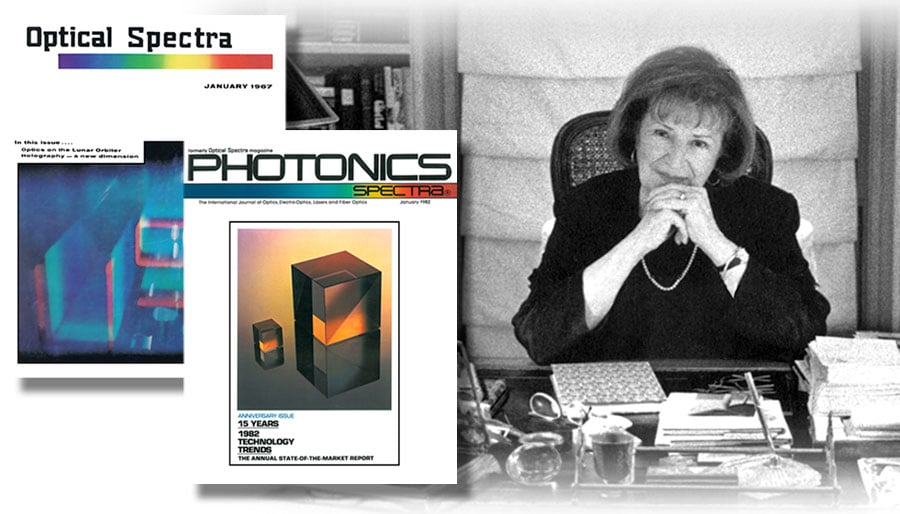
Laurin Publishing founder and CEO Teddi Laurin published the first issue of Optical Spectra magazine in 1967.
Devices that run on light as opposed to electricity have numerous advantages, the first of which is speed. Light travels at about 10× the speed of electricity, which means that data transmitted through photonic media such as fiber optic cables can travel longer distances in a fraction of the time. Visible light and infrared beams, unlike electric currents, can pass through one another without interacting. As a result, a single optical fiber has the capacity to carry 3 million telephone calls simultaneously. These advantages, among others, continue to redefine the possibilities of modern life.
I: History
Ancient History
Ancient Egyptians, Hindus, Romans, Greeks, Mayans, and Aztecs built monuments and created art that paid homage to light, sometimes using unique architecture to bring in and showcase natural forms of light. Many of these ancient cultures worshipped deities associated with the sun, such as Ra and Apollo. Light was associated with power, life, and healing.
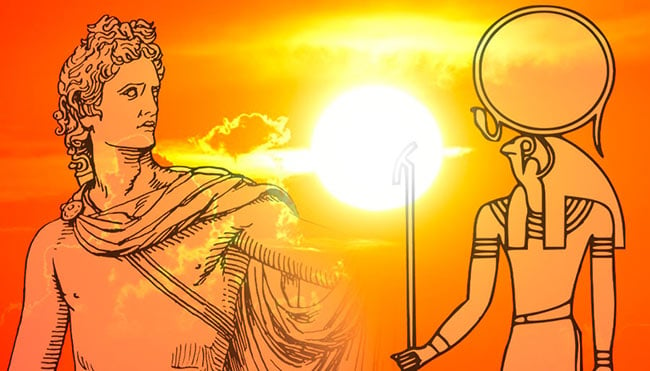
Ancient civilizations built temples and worshipped deities associated with light and the sun. Sunset courtesy of pixabay/alexas_fotos-686414. Ra courtesy of pixabay/clker-free-vector-images-3736. Apollo courtesy of pixabay/openclipart-vectors-30363.
750 B.C.
The first lenses date back to around 750 B.C. The earliest lenses were made from polished crystal — often quartz. Ancient lenses have been found in Mesopotamia, Egypt, Greece, Babylon, Nordic countries, and elsewhere. Glass objects that resembled lenses were found earlier, but their purposes have been disputed, as the objects may have been ornamental.
300 B.C.
In about 300 B.C., Greek mathematician Euclid publishes Optics, a manuscript on the geometry of vision, the first known written work to examine vision from a mathematical perspective. The work influenced later writings of Greek, Islamic, and Western European Renaissance scientists and artists.
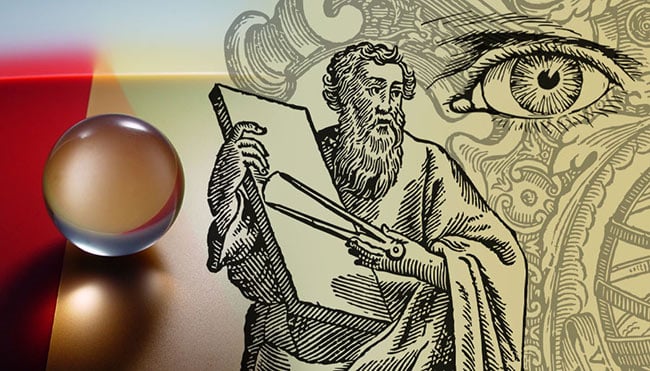
Euclid’s Optics is the first known text that examines vision from a mathematical perspective. Sphere courtesy of iStock.com/DanBrandenburg. Euclid courtesy of pixabay/gdj-1086657. Eye courtesy of pixabay/openclipart-vectors-30363.
2nd Century
Ptolemy’s (partially lost) work Optics is written. It covers geometrical optics, dealing with reflection, refraction, and color.
10th Century
Persian mathematician Ibn Sahl’s treatise “Fi al-'ala al-muhriqa” (“On the burning instruments”) reveals lens shapes that are able to focus light without geometric aberration. Sahl has been described as the first to discover the law of refraction, now known as Snell’s law and named for Willebrord Snellius, who derived an equivalent law 600 years later.
11th Century
Arab mathematician and physicist Ibn al-Haytham, known as “the father of modern optics,” produces a comprehensive and systematic analysis of Greek optical theories. Al-Haytham wrote numerous books on optics, the most significant and influential being Book of Optics. The book is translated into Latin at the end of the 12th century, laying the groundwork for later developments in optics.
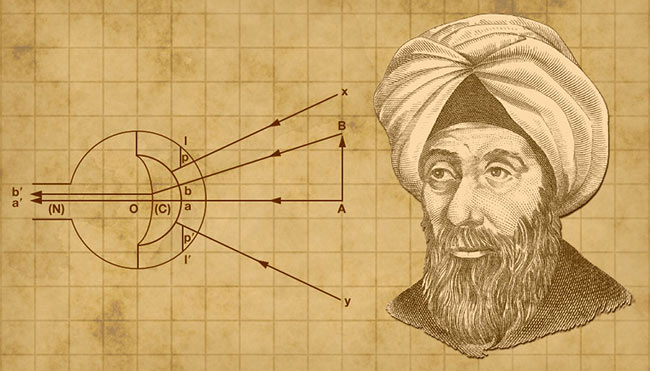
Ibn al-Haytham is the first to accurately describe the process of human vision. Al-Haytham courtesy of Wikimedia Commons. Background courtesy of pixabay/geralt-9301.
11th-13th Centuries
Many Western scientists build upon the work of Greek and Arab writings on optics, by creating textbooks that compile, organize, and further develop the theories and formulas of previous generations of scientists.
16th Century
Willebrord Snellius and René Descartes rediscover the law of refraction (named Snell’s law, after Snellius), first discovered by Ibn Sahl around 980.
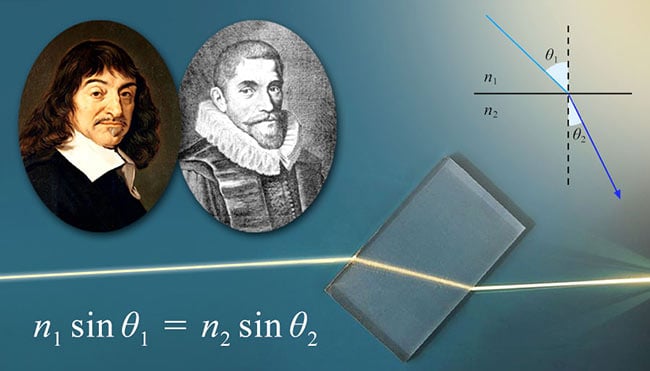
Willebrord Snellius and René Descartes. Courtesy of Wikimedia Commons.
17th Century
The first known microscopes and telescopes are created, reinventing the scientific community’s understanding of biology, astronomy, and navigation.
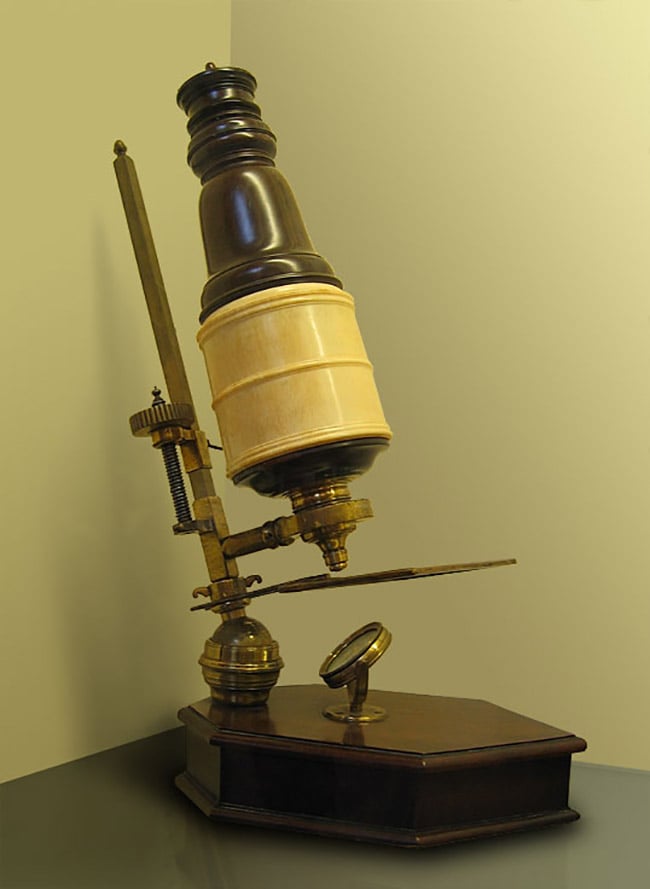
A 17th-century compound microscope similar to the one Robert Hooke would have used to compile his Micrographia. From the Whipple Museum of the History of Science in Cambridge. Courtesy of Andrew Dunn.
1905
Albert Einstein publishes “On a Heuristic Viewpoint Concerning the Production and Transformation of Light,” a theory developing a hypothesis that light energy is carried in discrete quantized packets.
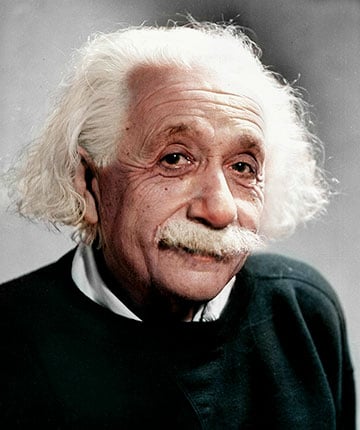
Albert Einstein, courtesy of Wikimedia Commons, colorized by Michael W. Gorth.
1916
The Optical Society of America (OSA) is founded, today known as The Optical Society.
1927
Oleg Losev invents the first light-emitting diode.
1930
Indian physicist Chandrasekhara Venkata Raman is awarded the Nobel Prize in physics for his work in the field of light scattering and for discovering the phenomenon named after him — Raman scattering, which leads to later fields such as Raman spectroscopy.
1954
Working with Herbert J. Zeiger and graduate student James P. Gordon, Charles Townes demonstrates the first maser at Columbia University. The ammonia maser, the first device based on Einstein’s predictions, obtains the first amplification and generation of electromagnetic waves by stimulated emission. The maser radiates at a wavelength of a little more than 1 cm and generates approximately 10 nW of power.
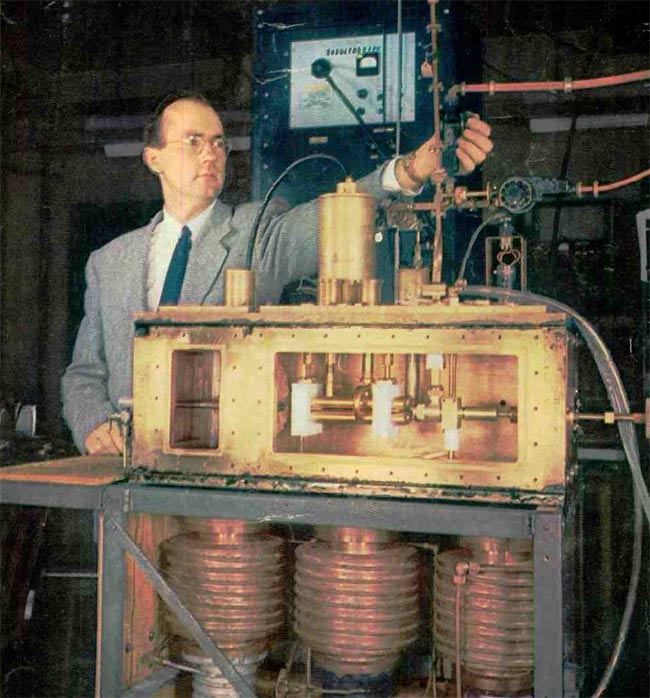
The first maser, the precursor to the laser, is demonstrated at Columbia University by Charles Hard Townes, Herbert Zeiger, and James Gordon.
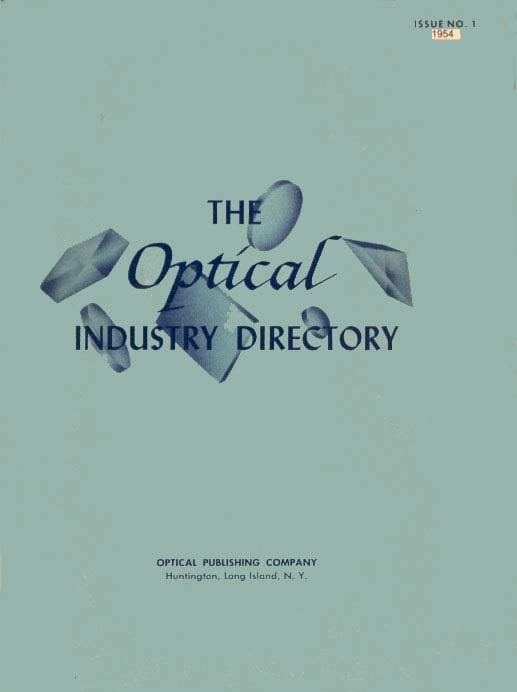
The first Optical Industry Directory was published in 1954 by Dr. Clifton Tuttle, a retired Eastman Kodak physicist. At its inception, the directory was a small, single volume, one that would expand significantly, ultimately establishing itself as “the bible” of the optics industry.
1955
The Society of Photographic Instrumentation Engineers (SPIE) is founded.
1960
Theodore Maiman constructs the first ruby laser.
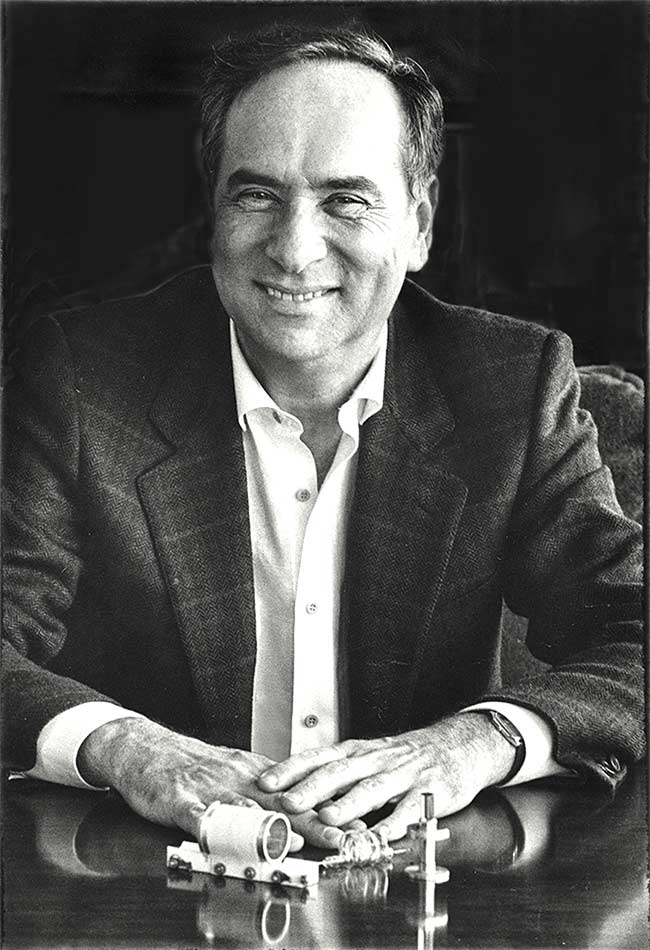
Ted Maiman, shown here in 1964, built the world’s first operable laser in May 1960. Courtesy of Wikimedia Commons.
1962
Nick Holonyak Jr. invents the first visible spectrum LED.
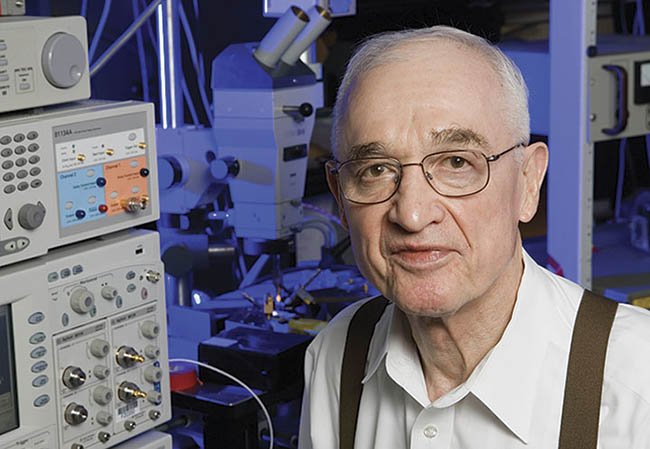
Nick Holonyak Jr. Courtesy of L. Brian Stauffer/University of Illinois.
1967
Carl Kocher and scientists at the Ernest O. Lawrence Radiation Laboratory at the University of California demonstrate quantum entanglement of photons emitted from a calcium atom.
1970
Corning Glass researchers Robert Maurer, Donald Keck, and Peter Schultz invent fused silica fiber optic wire, capable of carrying 65,000× more information than copper wire.
1971
Dennis Gabor is awarded the Nobel Prize in physics for his invention and development of the holographic method.
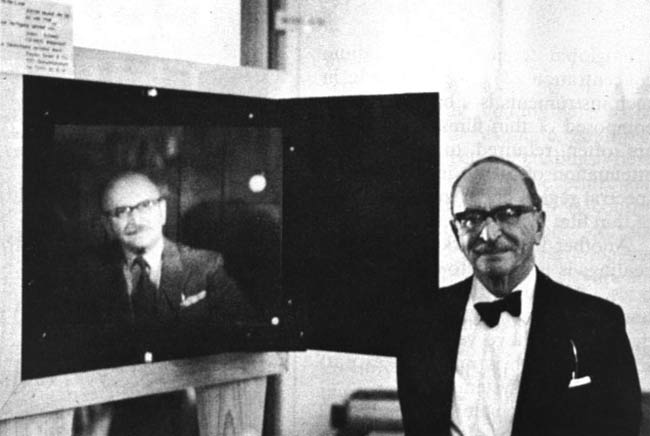
Dr. Dennis Gabor, winner of the 1971 Nobel Prize for physics, stands beside a portrait hologram made by McDonnell Douglas Electronics. Courtesy of McDonnell Douglas Electronics.
1975
The first digital camera is developed by Steven Sasson at Eastman Kodak, using a charge-coupled device (CCD) image sensor.
1981
Arthur Leonard Schawlow and Nicolaas Bloembergen win half the Nobel Prize in physics for their contribution to the development of laser spectroscopy. Kai M. Siegbahn is awarded the other half for his contributions to the development of high-resolution electron spectroscopy.

Arthur Schawlow (left), Nicolaas Bloembergen (middle), and Kai M. Siegbahn (right). Courtesy of Wikimedia Commons.
1982
Peter Moulton of MIT invents the Ti:sapphire tunable solid-state laser.
1983
U.S. President Ronald Reagan proposes the Strategic Defense Initiative, referred to as the “Star Wars” initiative, which creates a seismic shift in funding toward military and defense projects.
1987
Chemists Ching Wan Tang and Steven Van Slyke at Eastman Kodak create the first practical OLED.
1988
The first trans-Atlantic fiber optic cable, the TAT-8, is laid down between the U.S. and Europe.

A ship lays down a fiber optic cable that today spans the Pacific and carries terabits of data. Courtesy of Hawaiki.
1994
Harvard physicist Federico Capasso and his team develop the quantum cascade laser.
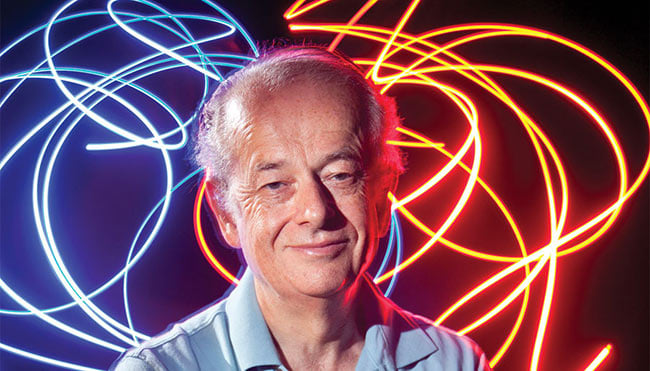
Federico Capasso. Courtesy of Eliza Grinnell/Harvard SEAS.
1997
Shuji Nakamura, Steven DenBaars, and James Speck of the University of California, Santa Barbara announce the development of a gallium-nitride (GaN) laser that emits bright blue-violet light in pulsed operation.
2005
John Hall and Theodor Hänsch are awarded half the Nobel Prize in physics for their contributions to the development of laser-based precision spectroscopy, including the optical frequency comb technique.
2014
Stefan Hell, William Moerner, and Eric Betzig are awarded the Nobel Prize in chemistry for the development of superresolved fluorescence microscopy, a technique that surpasses the Abbe limit.
2018
Donna Strickland and Gérard Mourou are awarded half the Nobel Prize in physics for the chirped pulse laser.

Donna Strickland (left), Gérard Mourou (middle), and Arthur Ashkin (right). Strickland courtesy of Bengt Nyman. Mourou courtesy of Joseph Xu/Michigan Engineering. Ashkin courtesy of Arthur Ashkin.
Arthur Ashkin is awarded the other half for the invention of optical tweezers.
2019
Google claims that its Sycamore processor achieves quantum supremacy.
2020
The science community marked the 60-year anniversary of the laser with continued innovation. Advances to laser technology in 2020 included demonstrations of laser cooling of polyatomic YbOH molecules; thulium laser welding; and developments of a fully planar solar-pumped laser and ultrafast high-power yellow laser.
Laureates Roger Penrose, Reinhard Genzel, and Andrea Ghez were recognized with the 2020 Nobel Prize in physics. Genzel and Ghaz used adaptive optics and infrared speckle imaging techniques in the work that would ultimately lead to the award.
II: Fundamental technologies
Imaging: Imaging is used to gather physical information about the world, whether it’s capturing a moment with a smartphone camera, or imaging for microsurgery with optical coherence tomography. Examples of imaging technologies and fields include photography; thermal, multispectral, hyperspectral, gravitational, photoacoustic, thermomagnetic, and speckle imaging; and optical coherence tomography. (Read more about Imaging in the Photonics Handbook.)
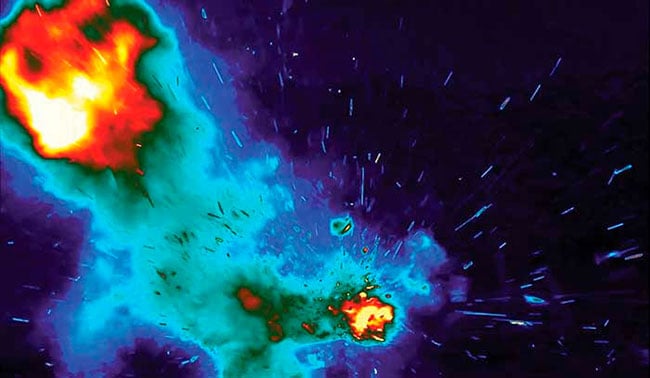
Thermal image of munitions testing. Courtesy of FLIR Systems.
Lasers: Lasers generate highly focused and concentrated linear beams of light and are an enabling technology for lidar, digital projection, imaging technologies, barcode scanners, data storage, and others. Lasers range in size from enormous synchrotrons, which can span several miles, to tiny VCSELs several nanometers in length. Various types of lasers are suited for different tasks, from cutting and welding, surgical and medical applications, to use in lidar systems in autonomous vehicles. (Read Lasers: Understanding the Basics, Photonics Handbook.)
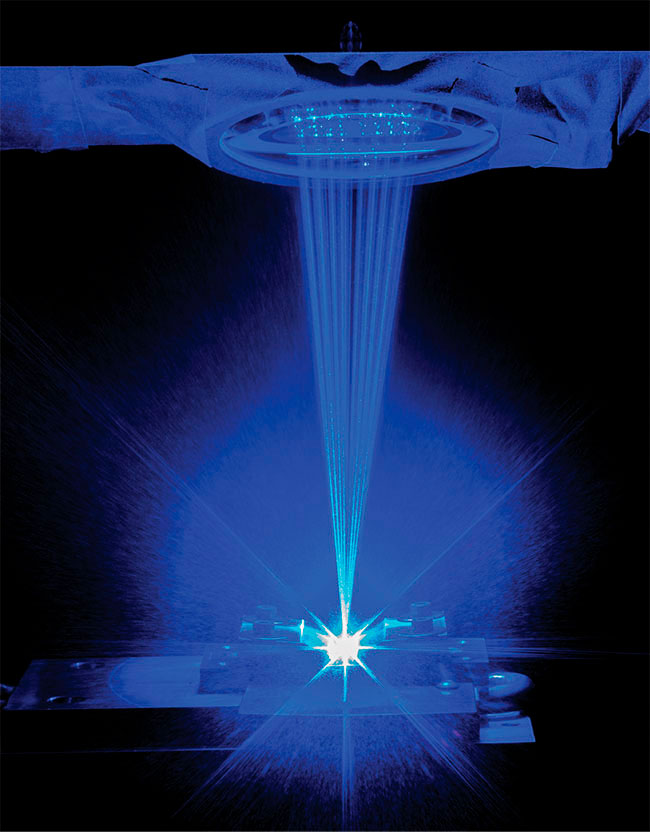
Blue wavelengths are highly absorbed by many materials, leading to qualitative and quantitative advantages to welding metals. Shown is NUBURU’s AO-150. Courtesy of NUBURU.
Lenses: Lenses are transmissive optical devices that focus or disperse light by means of refraction. The devices are able to accomplish a wide variety of tasks depending on how they are shaped, with applications such as magnification, correction of aberrations, and focusing. Various materials such as quartz glass, plastics, borosilicate glass, or chalcogenides each have their own advantages and disadvantages in terms of the wavelengths at which they are useful, how they handle heat, their durability, and so on. (Read more about lenses and optics in the Photonics Handbook.)
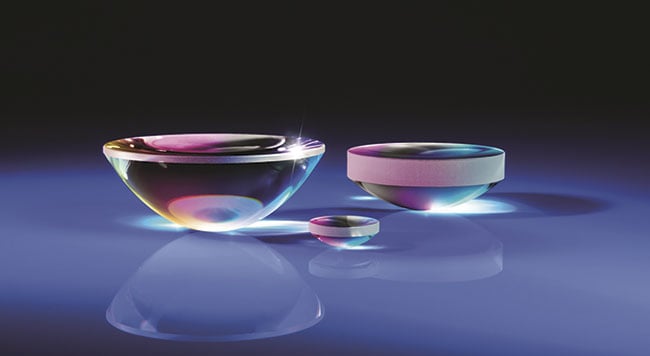
Aspheric lenses. Courtesy of Edmund Optics.
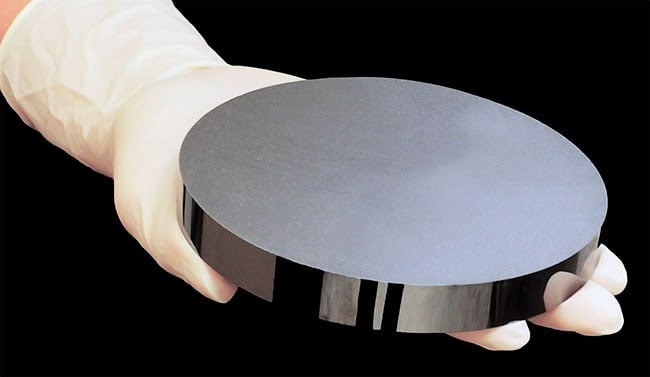
Lens blank made from chalcogenide material. Courtesy of LightPath Technologies.
Machine vision: This technology is used to interpret information about an object or scene through the use of noncontact optical sensing. Machine vision has evolved considerably, from cameras performing simple tasks, to sophisticated multispectral devices using deep learning to make informed decisions about complex data. As a new chapter of the age of automation begins, machine vision is allowing robots to perform more and more complex tasks, such as bin picking. The technology is improving manufacturing processes, safety in autonomous vehicles, and medical imaging. (Read more about machine vision in Vision Spectra.)
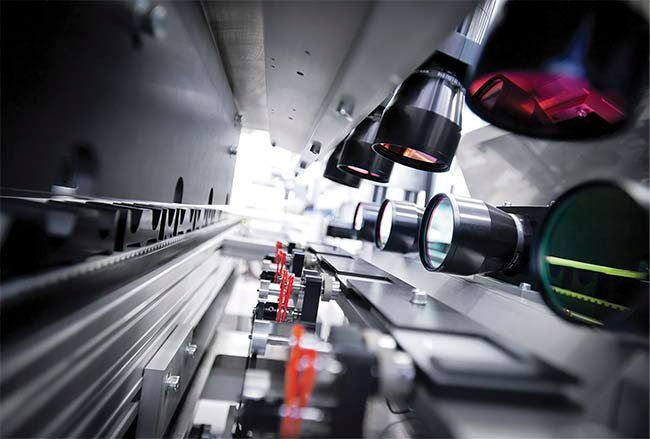
High-speed imaging in an automated glass inspection system captures defects. Courtesy of ATS Automation.
Metrology: Photonics technologies have made measurement more precise than ever. Angles, dimensions, topography, light intensity, and wavelength can be measured with extreme accuracy. Examples of optical metrology include optical distance measurements, lidar, time of flight, optical temperature sensors, and spectrometry.
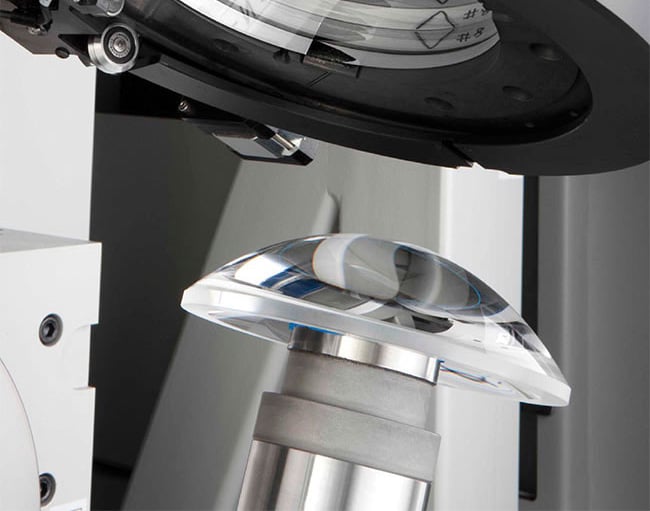
Asphere metrology choices include stitching interferometry. Courtesy of Edmund Optics.
Microscopy: Microscopy is an application of optics for viewing tiny objects and phenomena. Fluorescence techniques expand the amount of information that can be gathered by isolating specific proteins or cells. Superresolution microscopy pushes the technology even further by surpassing the Abbe limit, a theoretical limit of diffraction.
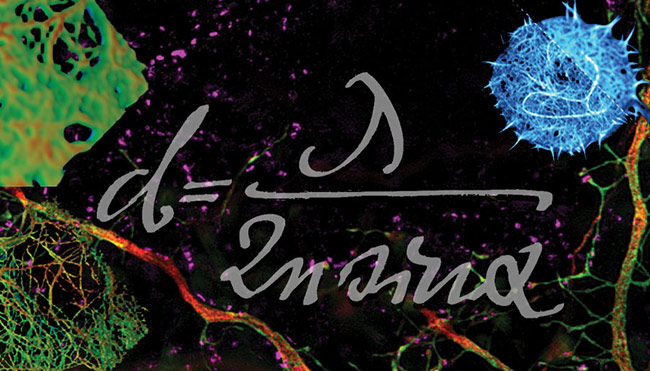
Microscopy has historically been limited by the Abbe limit, a theoretical limit of diffraction, though superresolution microscopy in which that limit is surpassed is a major field of study. 3-D-PAL-M courtesy of Zeiss. ITPKA-NGG courtesy of M.J. Schell, Uniformed Services University, and Zeiss. T cell courtesy of Marco Fritzche, Mathias Clausen, and Christian Eggeling, MRC Human Immunology Unit, Weatherall Institute of Molecular Medicine, University of Oxford.
Optical fiber: An optical fiber can be made by drawing glass or plastic into a diameter slightly thicker than a human hair. Optical fibers are used for a number of applications, but the most common is fiber optic communication. Fiber optic communication provides transmission over longer distances and at higher bandwidths (data rates) than electrical cables. Fiber optics are also used for illumination and imaging, and more specialized applications such as fiber optic sensors and fiber lasers. (Read Fiber Optics: Understanding the Basics, Photonics Handbook.)

Optical fibers about the size of a strand of human hair are capable of transmitting more data over longer distances and at faster speeds than other mediums. Courtesy of iStock.com/alphaspirit.
Sensors: Optical sensors convert light into an electronic signal, which can then be interpreted by a computer. They serve a wide variety of purposes, including measuring changes in light; interpreting light data to create images; creating electricity; measuring temperatures, velocity, pressure, and vibrations; counting or positioning of parts; and enabling contactless detection. (Read more about Sensors and Detectors in the Photonics Handbook.)
Spectroscopy: Spectrometers use optical elements to diffract incoming light, detected by a sensor, down to its most fundamental spectra. Every substance has a unique spectral fingerprint. Modern spectrometers are equipped with a database of spectral fingerprints for quick identification and data acquisition. Types of spectroscopy include Raman, Fourier transform, infrared, and ultraviolet. Spectroscopy has applications in biology, medicine, forensic science, food safety, and astronomy. (Read more about Spectroscopy in the Photonics Handbook.)
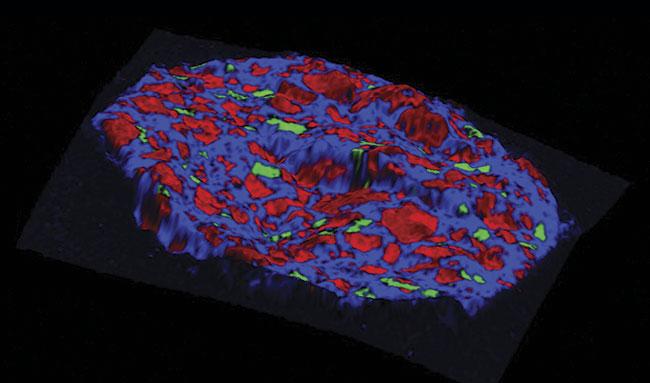
Raman image of an over-the-counter analgesic tablet illustrating the distribution of acetaminophen (blue), aspirin (red), and caffeine (green) within the tablet. Courtesy of Ranishaw.
III: Photonics in our world
Aerospace:
Airplanes, drones, spacecraft, and satellites rely on photonic technology for aerospace navigation and information. Aircraft equipped with lidar are able to perform difficult or risky inspections and surveys. Holographics are employed in head-up displays, particularly in military aircraft settings. Drones use cameras, sometimes thermal or other spectral ranges, as in the case of defense, and satellites and spacecraft use sensors to monitor conditions on Earth and in space.
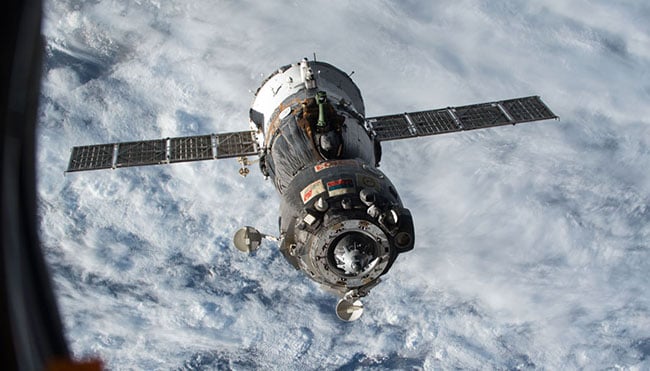
The Soyuz TMA-15M spacecraft undocked from the Rassvet module on the International Space Station. Like other spacecraft, communication and tracking systems incorporate photonics technology. Courtesy of NASA.
Agriculture:
Techniques such as hyperspectral imaging, spectroscopy, and machine vision are used for automated sorting, inspection, and testing for more efficient farming and greater agricultural and food safety measures. Light management enables hydroponic greenhouse projects, which allow food to be grown in inhospitable climates.
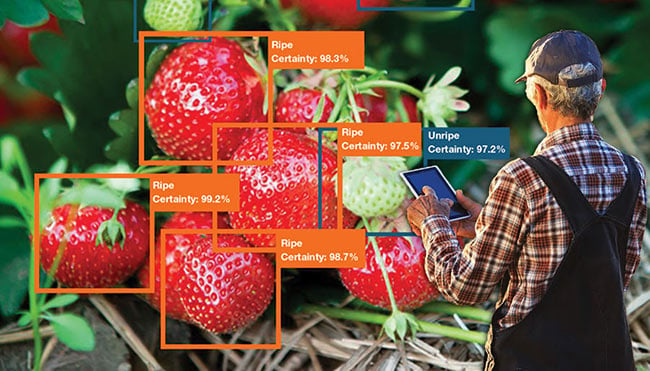
A neural net vision system inspects the ripeness of strawberries. Courtesy of Cyth Systems Inc.

Sensors in irrigation systems apply water based on spectral reflectance (left). Courtesy of U.S. Department of Agriculture. Active NDVI proximal crop reflectance sensors are mounted on a high-throughput phenotyping vehicle (right). Courtesy of Beth Ann Luedeker, Department of Soil and Crop Sciences, Texas A&M University.
Biology and medicine:
In biology and medicine, photonic technologies are enabling greater patient safety, more favorable outcomes, and earlier detection of disease. Photonic technologies such as endoscopy and optical coherence tomography (OCT) enable minimally invasive surgeries and microsurgeries that allow for shorter recovery times and increased patient safety. Imaging techniques such as OCT enable earlier detection of diseases such as glaucoma and even Alzheimer’s disease. (Read more about photonics in the life sciences.)
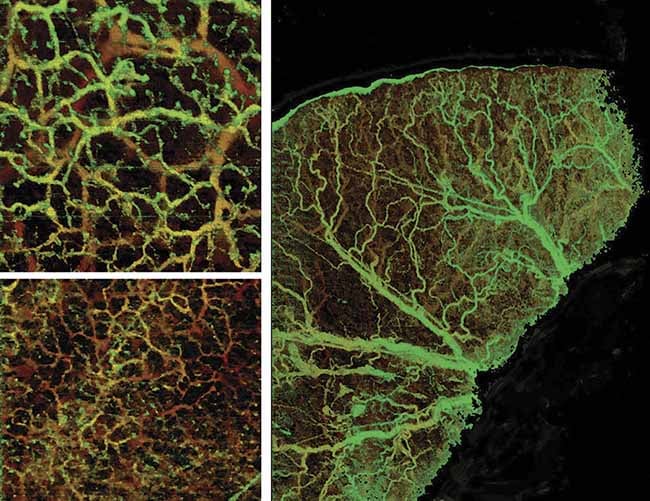
OCT angiography image of mouse skin using 800-nm and 1300-nm WP Microangio system. Courtesy of Wasatch Photonics.
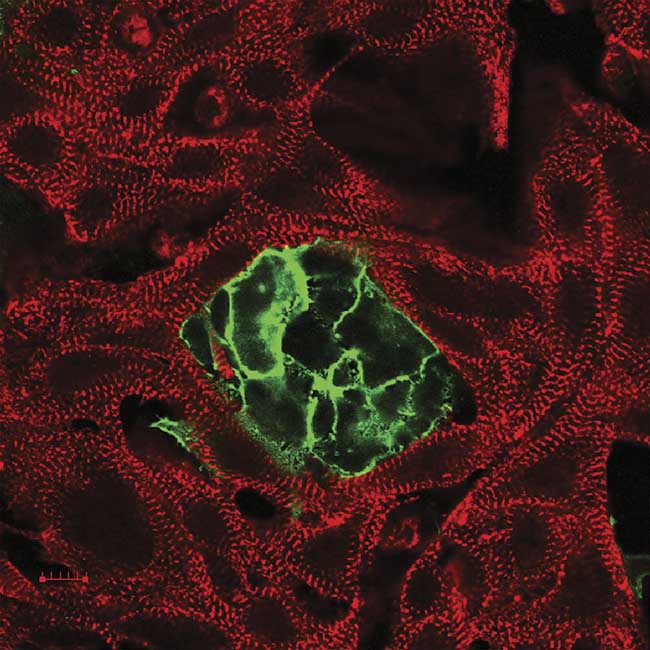
Heart cells (red) can be stimulated optically using interdispersed, dedicated, light-sensitive cells (green). Courtesy of Entcheva Lab.
Clean energy:
The photovoltaic cells in solar panels absorb the sun’s rays and convert them into greener electricity or heat. Solar panels continue to be refined and improved with emerging photonics technologies and materials such as quantum dots, perovskite, monograin thin films, and more. Nondispersive infrared absorption is used to evaluate biofuel emissions. Geological research and environmental monitoring are achieved in part through technologies such as spectroscopy. And electronics are using less energy with organic LEDS.

The economy is powering up the solar industry. Courtesy of iStock.com/RyanKing999.
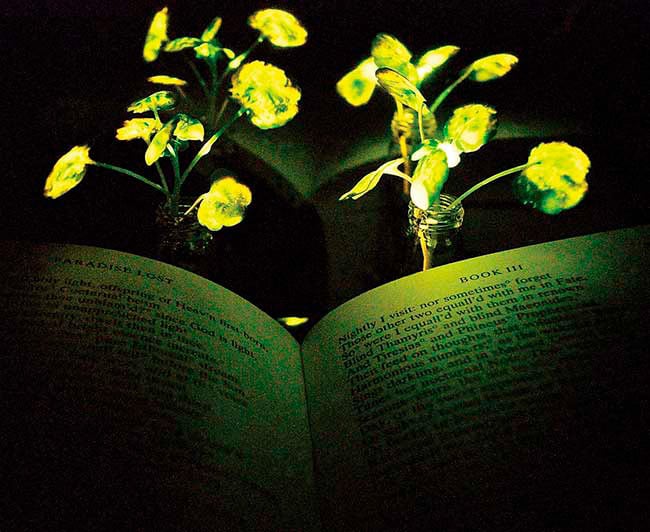
Two mature watercress are used as nanobionic light-emitting plants to illuminate John Milton’s Paradise Lost. Courtesy of MIT.
Communications:
Photonics has revolutionized telecommunications, particularly with fiber optics, which simultaneously carries millions of phone calls and significantly improves internet speeds and connectivity. Free-space optical communication methods have been used since about the early 1900s with the heliograph, and with the advent of space travel — which could allow for improved interplanetary communication — it has gained renewed interest.
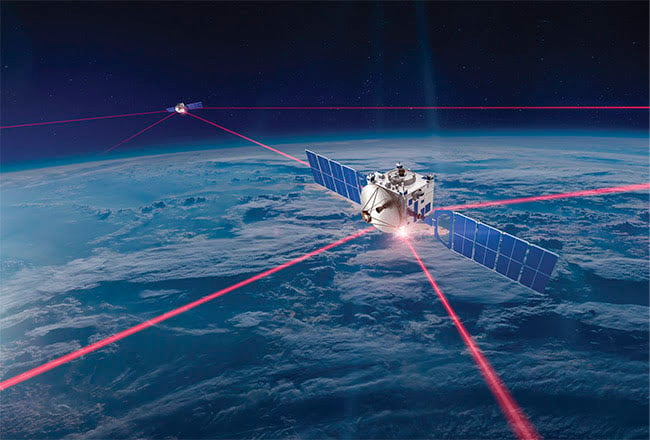
Satellites form constellations of effective coverage for optical communications. Courtesy of Mynaric.

Fiber optics have been an integral part of communications in the 21st century, and serve as the backbone of 5G networks. Courtesy of iStock.com/kynny.
Consumer electronics:
The modern smartphone includes front- and rear-facing cameras with LED flash, OLED displays, infrared sensors, and VCSEL lasers that enable users to unlock their phone, shoot video and pictures, and communicate information. Camera technology is allowing photographers and filmmakers to capture action in more challenging lighting conditions.
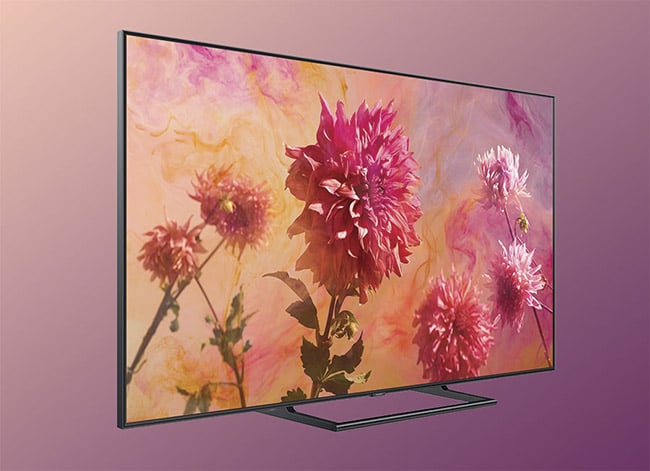
A Samsung QLED TV, which uses quantum dot technology. Courtesy of Samsung.
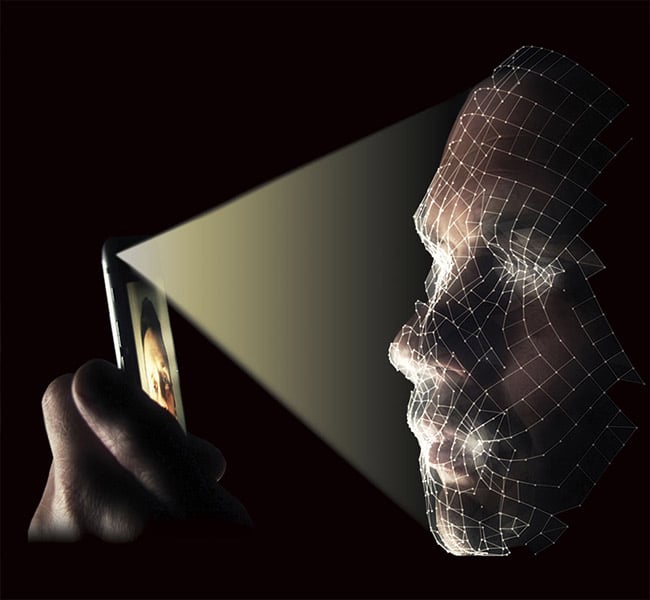
The modern smartphone includes front- and rear-facing cameras with LED flash, OLED displays, infrared sensors, and VCSEL lasers that enable users to unlock their phone, shoot video and pictures, and communicate information. Quantum dots are used in the newest generation of flat-screen televisions. Courtesy of iStock.com/Spencer Whalen.
Environmental monitoring:
Spectrometry, infrared and ultraviolet sensing, microscopy, and other photonic technologies are used to gather information about the quality of soil, water, and air, as well as aiding in biological research. These techniques are particularly advantageous compared to older ones, as they are nondestructive.
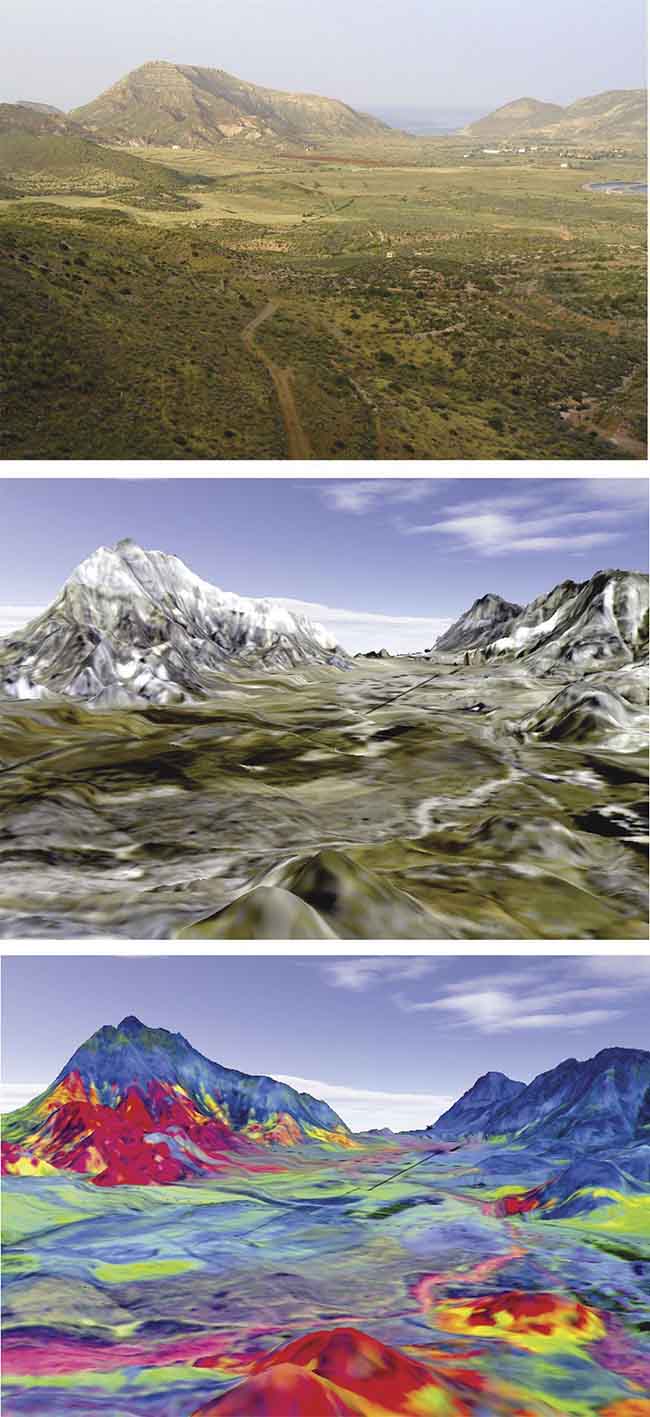
The Los Tollos volcanic center near Rodalquilar in Spain as it appears in a natural color composite image (top), when imaged by an airborne hyperspectral imager (middle), and when additional data from the HyMAP imager is superimposed, revealing hydrothermal alteration mineralogy of the area (bottom). The reddish colors are likely areas with gold mineralization. Red colors indicate intense alteration of the rocks and the presence of minerals such as alunite and kaolinite. Green areas are related to alteration, but at lower temperatures and pressures. Blue areas are unaltered volcanic and sedimentary rocks. Courtesy of Frank van Ruitenbeek of the University of Twente. Data credit: DLR of Germany.
Lighting:
The invention of the light bulb is among the most significant in history, and the development of lighting technology continues today. The current focus is on cost-effective and efficient light sources such as LEDs, as well as on catering light sources to meet specific spectral requirements for research applications. LED technology has made more efficient and longer-lasting light bulbs and sharper display technologies, and it is seeing increasing use in commercial and research applications.(Read Light-Emitting Diodes: A Primer, Photonics Handbook.)

Recessed LED and fluorescent luminaires play an increasingly pivotal role in architectural lighting. Courtesy of Philips.
Manufacturing:
The 21st century marks a new chapter in the age of automation in manufacturing, enabled by advancements in imaging and computation. Robots on the assembly line perform more and more complex tasks, such as bin picking, in which robots aided by machine vision pick parts out of bins. Lasers are also used with greater frequency in the manufacturing setting for parts cutting and welding.
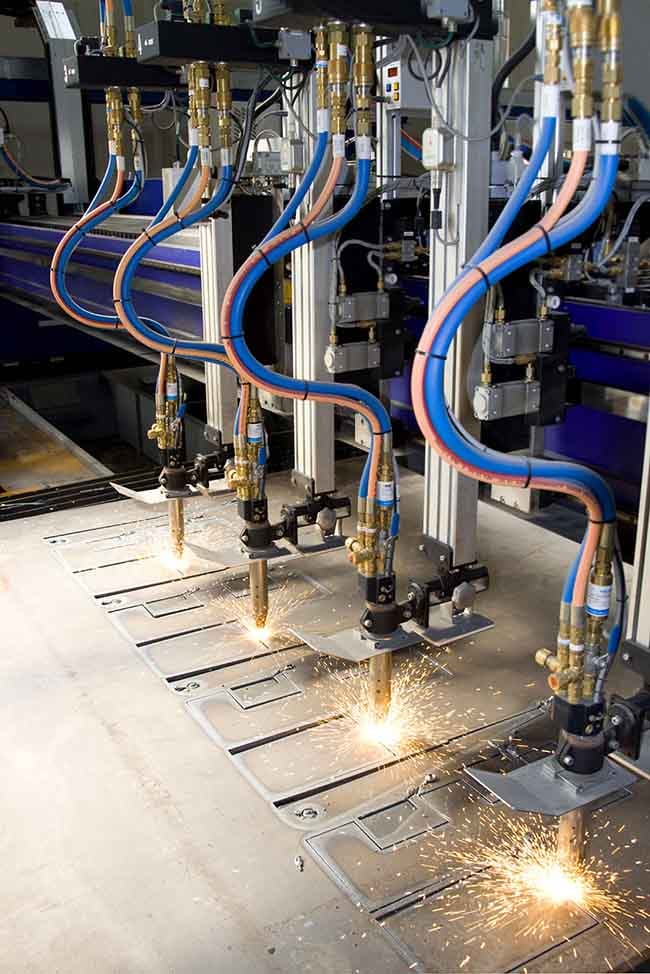
Lasers are increasingly used in cutting applications where a focused beam is used to ablate material or cut patterns to very precise depths into the material. Ultrafast lasers are typically used to cut metals and do not create HAZ (heat-affected zones). Lasers are also used to mark, drill, ablate, and texture surfaces. iStock-10696683. Courtesy of iStock.com/durigonale.
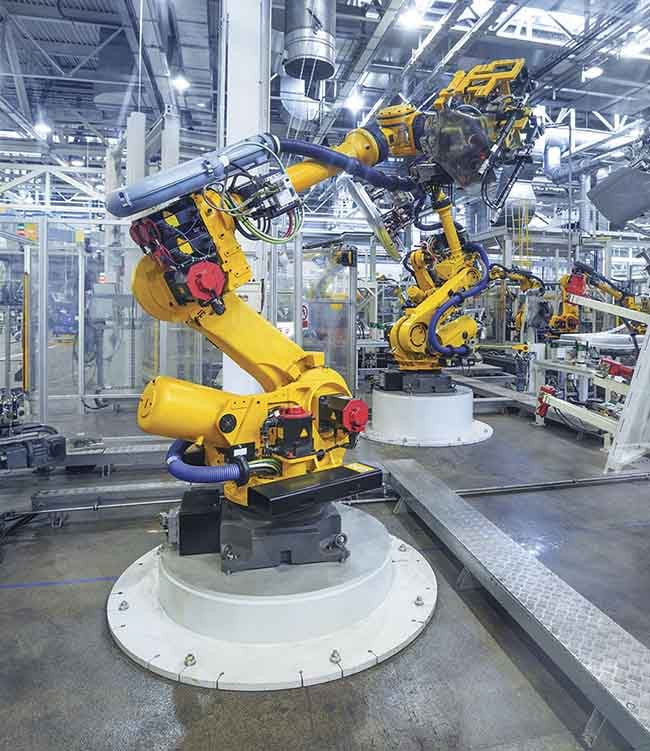
Machine vision contributes to universally networked and highly automated processes in the Industrial Internet of Things (IIoT). Courtesy of MVTec Software GmbH.
Transportation:
With autonomous vehicles becoming increasingly sophisticated, photonics is playing a bigger role in the automotive and transportation industry. Lidar and other 3D imaging techniques have served as enabling technologies for autonomous vehicles, while other techniques, such as optical sensing — which detects blind-spot obstacles — have also become increasingly popular in driver-operated vehicles.
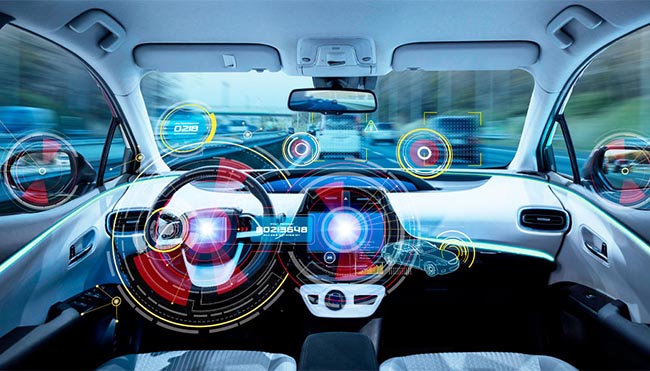
Futuristic car cockpit of an autonomous vehicle. The driverless cars of tomorrow will rely on a mix of lidar, 3D imaging, and thermal sensing for navigation. Courtesy of iStock.com/metamorworks.
IV: Emerging fields
Quantum technology: Quantum physics is another area of science that intersects with photonics. Quantum theory was first presented by Max Planck at the turn of the 20th century and was followed by the theoretical foundation developed by Albert Einstein. Quantum physics has led to a better understanding of the world at large and has inspired numerous technologies. With classical physics being pushed to its limits, quantum physics is increasingly becoming an area of interest. With a greater understanding of the minutest machinations of atoms and quanta, more efficient and advanced devices can be created.
Relying on subatomic particle behavior, quantum sensors exploit the high sensitivity of quantum states. These sensors are increasingly being seen as a revelatory technology, with potential applications for medicine, defense, communications, and energy. They could be used for biological imaging, magnetic field sensing, and even the detection of gravitational waves, as was accomplished in 2015 by the LIGO system.
Quantum computing is making great strides in what is often referred to as the “race for quantum supremacy,” the moment a quantum computer is able to outperform a traditional supercomputer system or accomplish a traditionally impossible task. Google claimed quantum supremacy in October 2019 with its 54-qubit processor Sycamore. The processor was able to complete a random number-processing task in 200 seconds, which Google claimed would take a supercomputer 10,000 years to complete. IBM disputed the claim, contending its Summit supercomputer could accomplish the task in 2.5 days.
Quantum computing has significant implications for national cybersecurity, hence the race for quantum supremacy. A quantum computer has the potential to break through, in a matter of seconds, even the most advanced security systems based on traditional computing. The strong worldwide motivation for development of quantum technologies is evident in the marked increase in government funding devoted to the task.
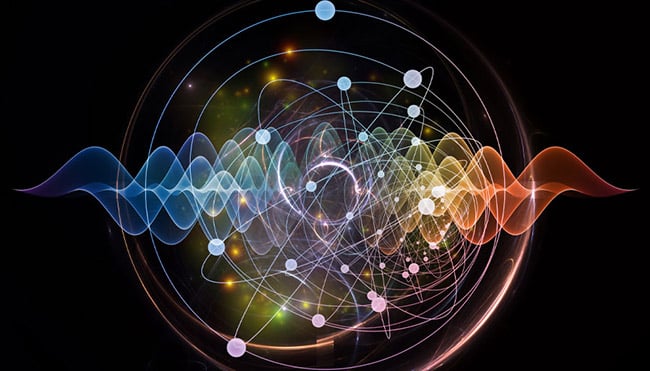
Atom and quantum waves illustrated with fractal elements. Courtesy of iStock.com/agsandrew.
Silicon photonics: The need for ever-increasing data storage in data centers and the emergence of 5G technology have prompted the growth of the silicon optical transceiver market.
Silicon nanophotonics technology is already used today for system-to-system connections in data centers. In the future, the technology will move into the connections between chips within servers, and eventually between sections on the chips themselves. This evolution is a response to the difficulty of moving electrons at higher and higher speeds over shorter and shorter distances. Until recently, state-of-the-art transmission rates over links in data centers were 100 Gbit/s. The industry will soon deploy 400 Gbit/s rates, with faster speeds on the horizon. The increase in transmission rates means that silicon nanophotonics solutions will work their way deeper into the communications structure. Data center applications are of primary commercial interest now, with future applications in gyroscopes and lidar.
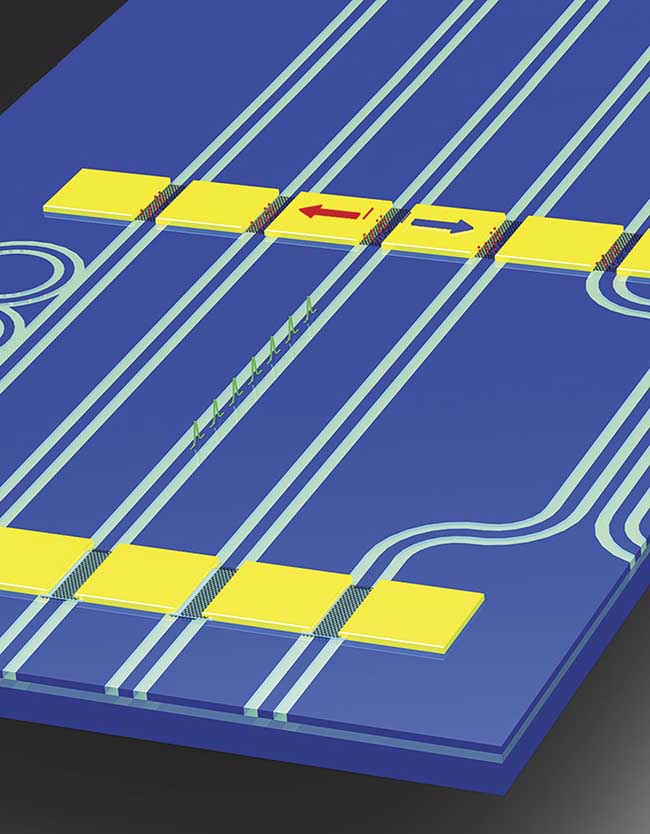
Graphene and other two-dimensional materials are being developed as active components on photonic integrated circuits. In this image, photonic modulators (bottom row) encode data in digital pulses carved from a continuous-wave input laser. These pulses are detected by chip-integrated photodetectors (top row). Other optical components such as ring filters and beamsplitters can be integrated on the same circuit. Courtesy of R.J. Shiue and D. Englund.
Optogenetics:
Optogenetics is the use of light to control cells in living tissue, typically neurons that have been genetically modified to express light-sensitive ion channels. The technique has furthered the understanding of how specific cell types contribute to biological tissue function such as neural circuits. It has also led to insights into neurological and psychiatric disorders such as Parkinson’s disease, autism, dissociative identity disorder, drug abuse, anxiety, and depression.
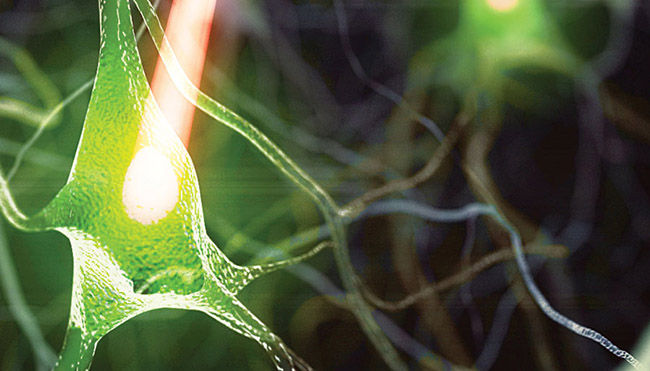
Lasers are used both to stimulate neurons and to map activity in connected neurons via fluorescent probes such as genetically modified calcium indicators. Courtesy of University College London.
Plasmonics: The subset of photonics that studies the plasmon, the quantum unit of plasma, is called plasmonics. According to Nature Photonics, the science takes advantage of the coupling of light to charges such as electrons in metals, and allows the breaking of the diffraction limit for the localization of light into subwavelength dimensions. The technology is an emerging area, but issues of energy loss in certain spectral regions remain. Potential applications for plasmonics include chemical and biological sensing, subwavelength imaging and superlenses, negative refractive index materials and invisibility, and solar cells.
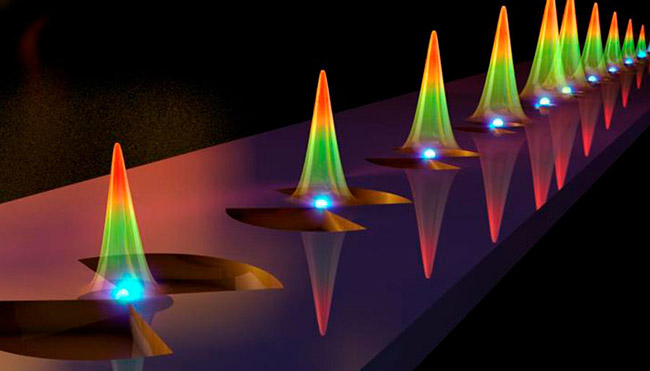
The plasmonic structure above resembles a bow tie and funnel, conducting light powerfully and indefinitely, as measured by a scanning near-field optical microscope. Courtesy of Ella Maru Studio.
References
https://www.innoget.com/what-is-photonics
https://www.nature.com/collections/vznrtlrjyx
https://www.quora.com/What-are-the-potential-applications-of-plasmonics
https://www.thoughtco.com/birth-of-fiber-optics-4091837
https://research.britishmuseum.org/research/collection_online/collection_object_details.aspx?objectId=369215&partId=1
http://philomatica.org/wp-content/uploads/2013/01/Optics-of-Euclid.pdf
https://doi.org/10.1086/355456
https://doi.org/10.1086/350266
https://www.britannica.com/science/Snells-law
https://interestingengineering.com/a-brief-history-of-the-telescope-from-1608-to-gamma-rays
https://www.osa.org/history/
https://www.photonics.com/Articles/A_History_of_the_Laser_1960_-_2019/a42279
https://www.ulsinc.com/learn/history-of-lasers
https://books.google.com/books?id=4oMu7RbGpqUC&pg=PA114&hl=en#v=onepage&q&f=false
https://www.diyphotography.net/worlds-first-digital-camera-introduced-man-invented/
https://www.sil.si.edu/Exhibitions/Underwater-Web/uw-optic-05.htm
https://www.bell-labs.com/about/recognition/2014-super-resolved-fluorescence-microscopy/
https://www.photonics.com/Articles/Sycamore_vs_Summit_Google_Claims_Quantum/p6/v177/i1181/a65230
https://en.wikipedia.org/wiki/Ti-sapphire_laser
http://photonicsgr.com/history-of-photonics/
https://en.wikipedia.org/wiki/Solar_deity
/Buyers_Guide/Photonics_Media/c8287